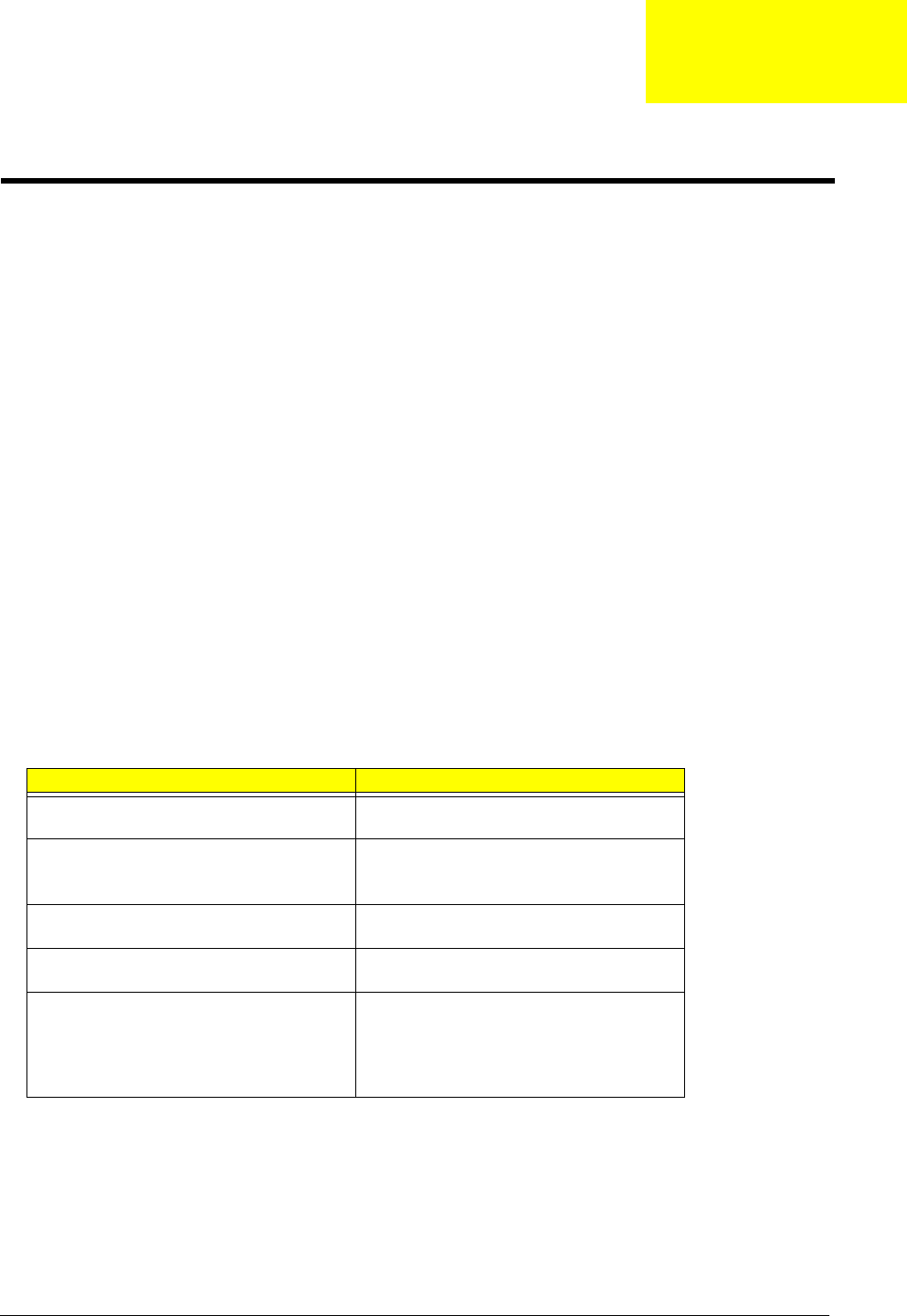
Chapter 4 61
Use the following procedure as a guide for computer problems.
NOTE: The diagnostic tests are intended to test the two models (TravelMate 290/Extensa 2900 series). Non-
Acer products, prototype cards, or modified options can give false errors and invalid system responses.
1. Obtain the failed symptoms in as much detail as possible.
2. Verify the symptoms by attempting to re-create the failure by running the diagnostic test or by repeating
the same operation.
3. If any problem occurs, you can perform visual inspection before you fellow this chapter’s instructions. You
can check the following:
power cords are properly connected and secured;
there are no obvious shorts or opens;
there are no obviously burned or heated components;
all components appear normal.
4. After you perform visual inspection you can also verify the following:
ask the user if a password is registered and, if it is, ask him or her to enter the password.
verify with the customer that Wndows XP is installed on the hard disk. Operating systems that
were not preinstalled by Acer can cause malfunction.
make sure all optional equipment is removed from the computer.
make sure the floppy disk is empty.
5. Use the following table with the verified symptom to determine which page to go to.
Symptoms (Verified) Go To
Power failure. (The power indicator does not go
on or stay on.)
“Power System Check” on page 63.
POST does not complete. No beep or error
codes are indicated.
“Insyde MobilePro BIOS POST Beep Code and
POST Messages” on page 67
“Undetermined Problems” on page 73
POST detects an error and displayed messages
on screen.
“Insyde MobilePro BIOS POST Beep Code and
POST Messages” on page 67
Other symptoms (i.e. LCD display problems or
others).
“Insyde MobilePro BIOS POST Beep Code and
POST Messages” on page 67
Symptoms cannot be re-created (intermittent
problems).
Use the customer-reported symptoms and go to
“Insyde MobilePro BIOS POST Beep Code and
POST Messages” on page 67
“Intermittent Problems” on page 72
“Undetermined Problems” on page 73
Troubleshooting
Chapter 4


















